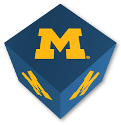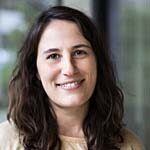 Andre Boehman studies fuels and combustion. For years, the University of Michigan mechanical engineering professor tried to team up with doctors to study the health effects of nanoparticles like the ones car and truck engines emit. And for years, funding agencies turned him down.”From prior experience in closely related areas, we almost need to have an active ongoing collaboration to be considered for funding,” Boehman says. “It’s a Catch-22.”
Andre Boehman studies fuels and combustion. For years, the University of Michigan mechanical engineering professor tried to team up with doctors to study the health effects of nanoparticles like the ones car and truck engines emit. And for years, funding agencies turned him down.”From prior experience in closely related areas, we almost need to have an active ongoing collaboration to be considered for funding,” Boehman says. “It’s a Catch-22.”
That cycle’s been broken for Boehman and nearly 170 other teams to date, thanks to MCubed, a unique new research funding program at U-M that lets professors themselves decide which projects to pursue. A formal, external review isn’t part of the process. To qualify for “cube” funding, three researchers from at least two disciplines simply have to agree to work together on a new project.
The $15-million, two-year pilot will distribute some 250 early-stage grants over time in an effort to jumpstart innovative, interdisciplinary work at the University.
Boehman and colleagues from the U-M Medical School will examine whether nanoscale soot from kitchen gas stoves is harmful to lungs. He’ll work with Ann Marie LeVine, M.D., an associate professor of pediatrics, and Cory Hogaboam, M.D., a professor of pathology.An important but understudied health issue, chronic exposure to soot nanoparticles both in and out of the home could lead to asthma, cancer, and even an increased risk of coronary artery disease, LeVine says. She appreciates the opportunity to study it through MCubed.”The University understands the changing environment in science as well restrictions in funding due to the economy,” LeVine says. “U-M is at the forefront working to enhance collaborations across disciplines, which has not been done in the past.”It’s at these boundaries where big breakthroughs happen, University officials say.”Many of the greatest advances in recent decades, ranging from biotechnology to robotics, have arisen from the intersection of disciplines,” says Stephen Forrest, U-M vice president for research. “MCubed explicitly fosters the cooperation among disciplines that is a key driver of innovation.”
What’s the Big Idea?
Researchers in surgery and dentistry are exploring a cancer stem cell vaccine. A physicist, an artist, and a composer are creating a multimedia event inspired by dark energy. A social scientist, a geriatrician, and an architect will investigate what features in cities make it easier or more difficult for older pedestrians to get around. Two teams of engineers and environmental scientists are looking into whether hydraulic fracturing could contaminate drinking water.
Researchers across campus are grateful for the chance to explore some of their most innovative ideas.
Jun Hee Lee, M.D., an assistant professor of molecular and integrative physiology at the Medical School, is working with a biologist and an internal medicine doctor to understand molecular processes that make exercise beneficial. In a pilot study on fruit flies, they’ll also explore whether a synthetic protein could provide some of those benefits.”This concept is in a very early development stage, so pursuing this project can be very risky,” Lee says. “Successful completion of this pilot research program would increase our chances of getting traditional funding in the future.”
That’s the hope of Mark Burns, T.C. Chang Professor of Engineering, professor of chemical engineering and biomedical engineering, and chair of the MCubed executive committee. MCubed, Burns says, could be a spark like a small grant was for him and an interdisciplinary team more than a decade ago. In a pilot study, he and his team demonstrated DNA analysis on a chip. The study led to $1.3-million National Science Foundation grant, a Science paper with more than 1,000 citations, and a startup, HandyLab, which sold to BD for $275 million. Most importantly, it has enabled quick diagnostic tests for diseases such as tuberculosis and the flu.
“MCubed essentially eliminates many of the hurdles to funding that faculty members typically have to think about. They don’t have to fit the project into the topic of a recent call for proposals, or worry about how their work fits within the confines of a particular funding agency’s target topics. They can just focus on the impact of the work. This type of intellectual freedom is important in innovative work,” Burns says.Burns is part of a team in engineering that dreamed up MCubed and canvassed campus to garner support.”This is a brilliant day for the stimulation of innovative research at the University of Michigan,” says David Munson, the Robert J. Vlasic Dean of Engineering. “I couldn’t be happier with the role the College of Engineering has played in initiating MCubed, which now is an exciting experiment involving every one of Michigan’s 19 schools and colleges.”Funding for MCubed is provided by the Provost’s Office; the individual schools, colleges, and units; and investigators who participate in the program. MCubed is the first program of U-M’s Third Century Initiative, a $50 million, five-year plan to develop innovative, multidisciplinary teaching and scholarship.



